Humpback whales are among the largest animals on the planet and they are massive creatures. Even though humpback whales are massive creatures, they still undergo the life cycle. Many animals struggle to prey on humpback whales due to their impressive length of about 50 feet. Almost all oceans have them and they usually move from one ocean to another. Some animals smaller than whales prey on and kill them.
What eats Humpback whales?

Predators of Humpback Whales
- Orcas (Killer Whales): Orcas, especially in groups known as pods, are known to surround and isolate humpback whales, making it hard for them to escape. They are faster swimmers and can chase humpback whales until they tire, making them vulnerable to attacks. Orcas are known to bite and grip a humpback whale’s fins or flippers to immobilize them.
- Sharks: While not as common as orcas, certain large sharks can pose a threat, especially to younger humpback whales.
- Humans: Indirectly, human activities such as pollution, shipping, and fishing can pose significant threats to these gentle giants.
Human Threats to Humpback Whales
Humpback whales face additional threats from human activities:
- Chemical and Organic Pollution: These can harm their reproductive and immune systems, potentially leading to a decline in their population.
- Entanglement: Humpback whales can get caught in fishing nets and lines, causing injury or even death.
- Ship Collisions: Large vessels can accidentally strike humpback whales, leading to serious injuries.
- Noise Pollution: Activities like shipping, construction, and naval exercises can disrupt their communication, navigation, and feeding behaviors.
- Global Warming: Changes in sea temperatures can affect the food sources of humpback whales.
Humpback calves are an easy target for their predators. Humpback whale calves have more predators than adult humpback whales. Killer whales and large sharks find them easier to hunt because they are smaller and less skilled.
Do orcas eat humpback calves?
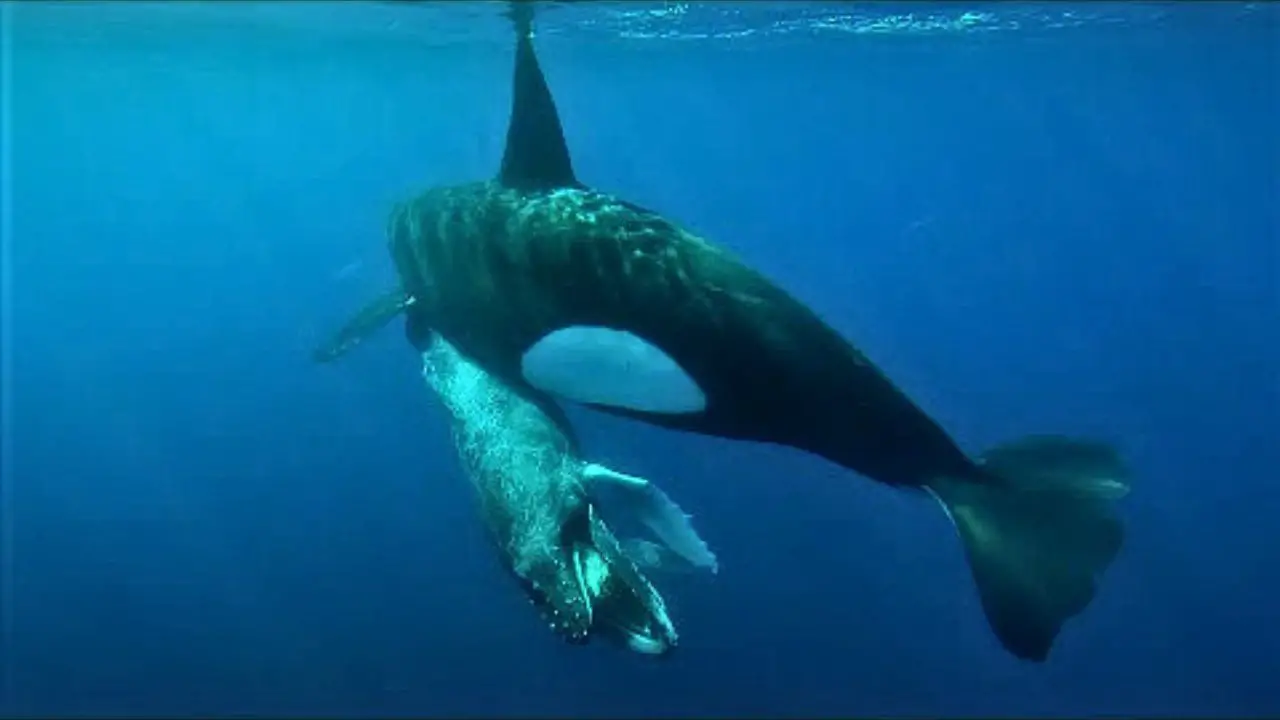
Yes, Orcas sometimes eat baby humpback whales. Orcas are intelligent predators that hunt different kinds of animals in the ocean including young humpback whales. These interactions are a natural part of how they hunt for their food and survive in their environment.
Do orcas eat baby humpbacks?
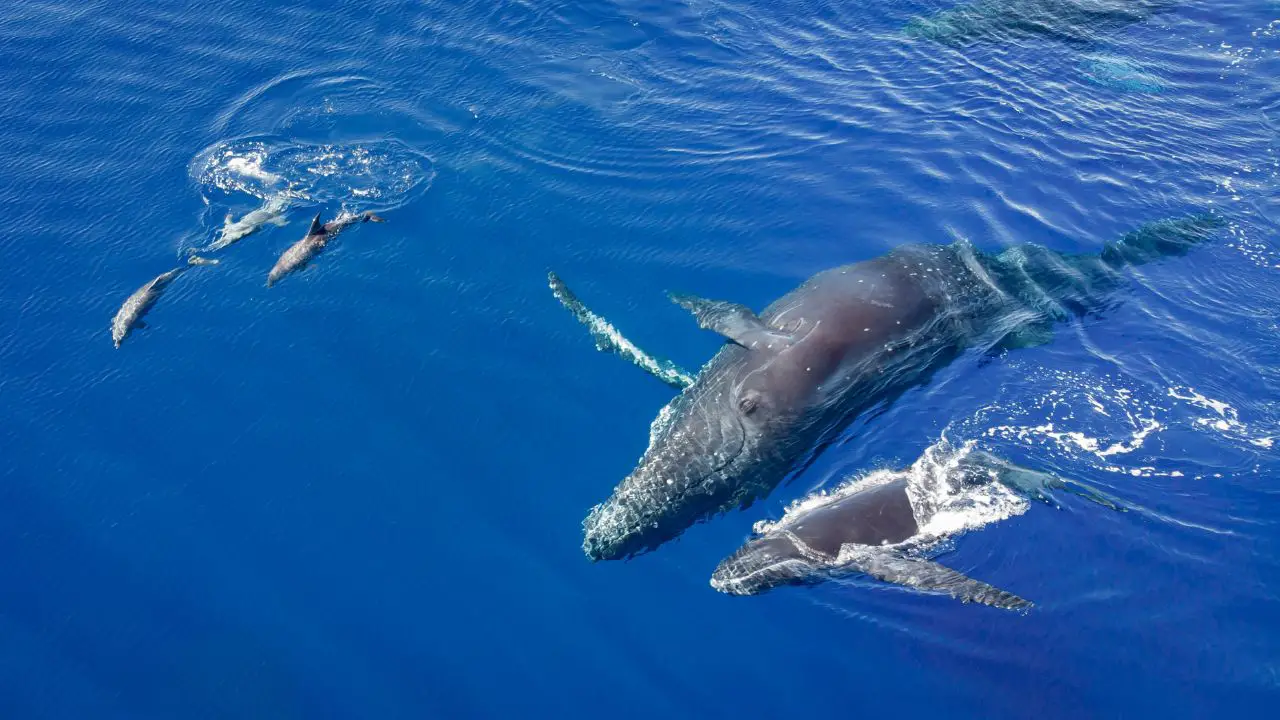
Yes, Killer whales occasionally eat humpback whales. Killer whales are skilled hunters and they can even hunt down young humpback whales or even adults in certain situations. This doesn’t happen all the time, but it does happen from time to time in places where both types of whales are present.
How do orcas attack humpback whales?
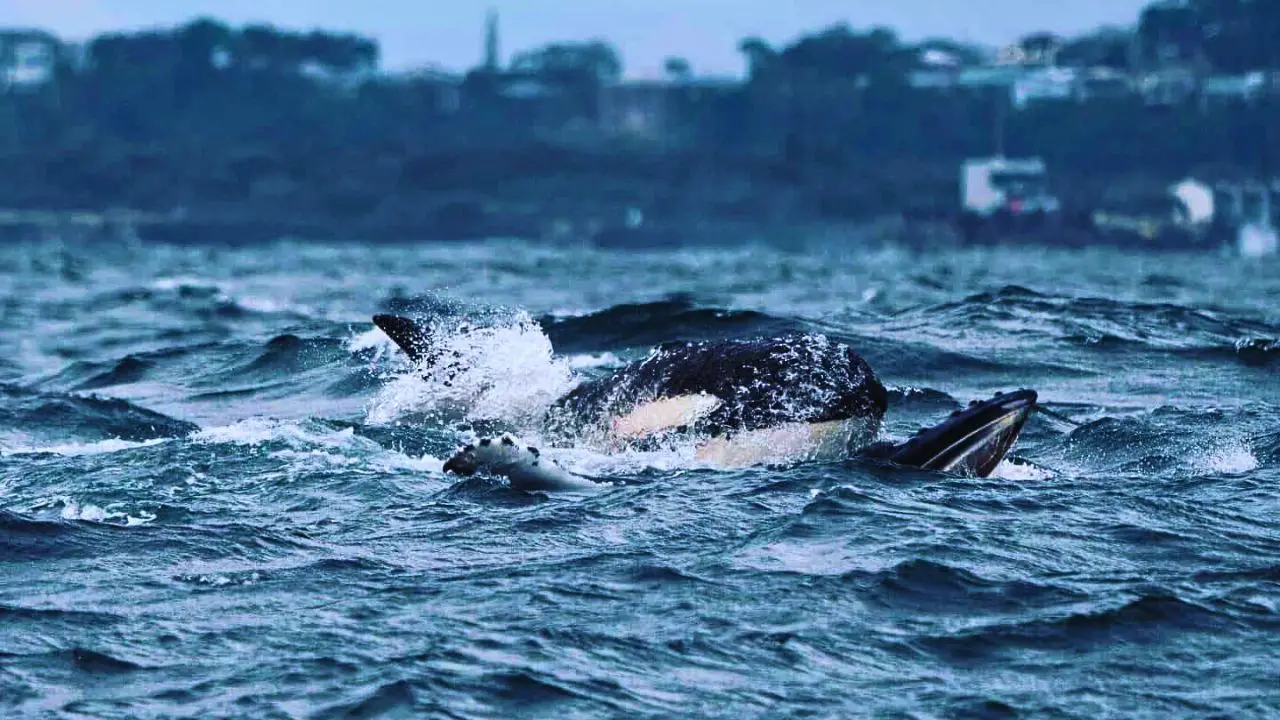
Orcas usually hunt in groups, called pods. They work together to surround and isolate the humpback whales, which makes the humpback whales harder to escape. On the other hand, orcas are faster swimmers than humpback whales. They chase humpback whales for a longer time until they get tired and weak.
Orcas bite and grip one of the humpback whale fins or flippers to get hold of its movement After taking down the humpback whales, the orcas make a more powerful force attack to finish the hunt.
Why are Humpback whales easy prey?
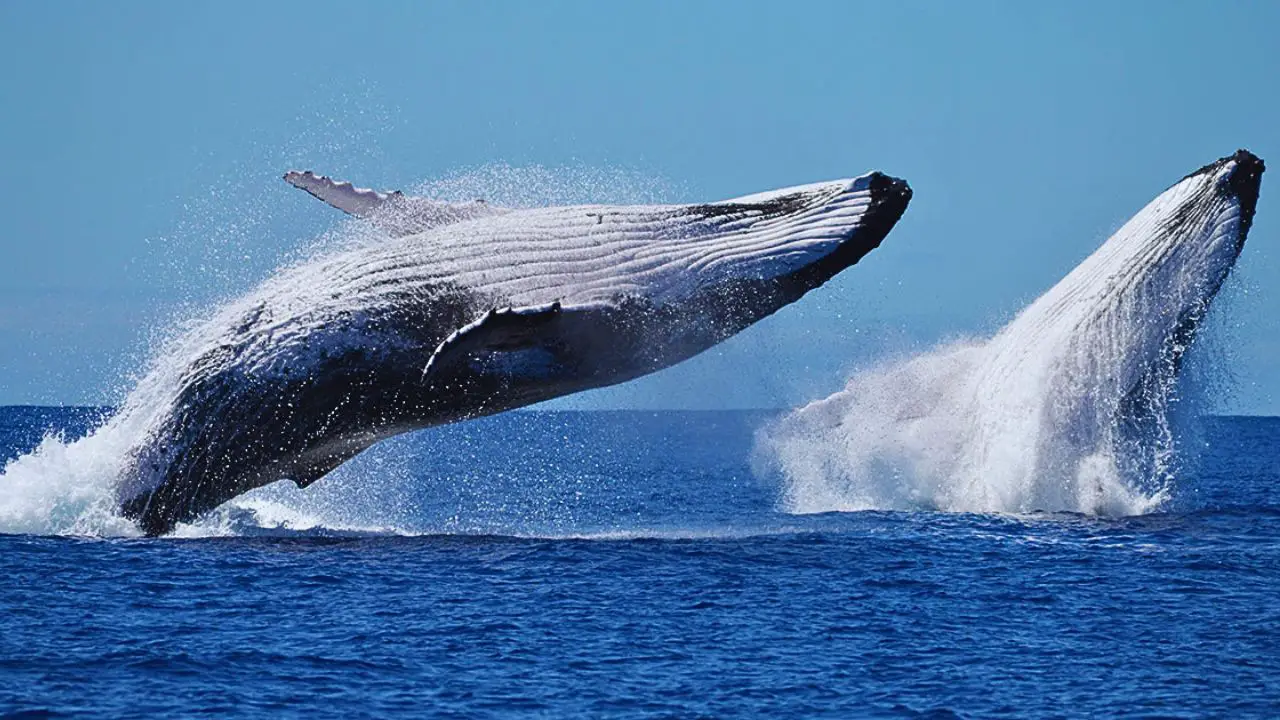
Humpback whales might be seen as easier targets for some predators because they are not very fast swimmers, especially compared to their predators. Young humpback whales, also called calves, are smaller in size and can’t even protect themselves as well. Unlike other whales, humpback whales don’t have sharp teeth to defend themselves.
Humpback whales are kind by nature and don’t fight back. Even though they have some weaknesses, their enormous size, strength, and the way they travel in groups still make them relatively safe from most of their predators.
How do Humpback whales defend themselves?

Humpback whales have developed several techniques to protect themselves:
- Tail Thrashing: They can throw their tails around to injure or frighten attackers.
- Traveling in Pods: Moving in groups provides safety in numbers.
- Breaching: Sudden jumps out of the water followed by loud splashes can deter predators.
Humpback whales protect themselves by using one of their techniques. They throw their tails around, which can injure and frighten the attacker. They also travel in groups which is known as pods is another effective tactic.
Humpback whales are massive creatures whose size alone can discourage many predators from attacking them. Humpback whales sometimes keep out of the water and crash back down. These sudden actions can deter the predators as sudden movements and loud splashes could intimidate their predators.
What is the biggest threat to Humpback whales?
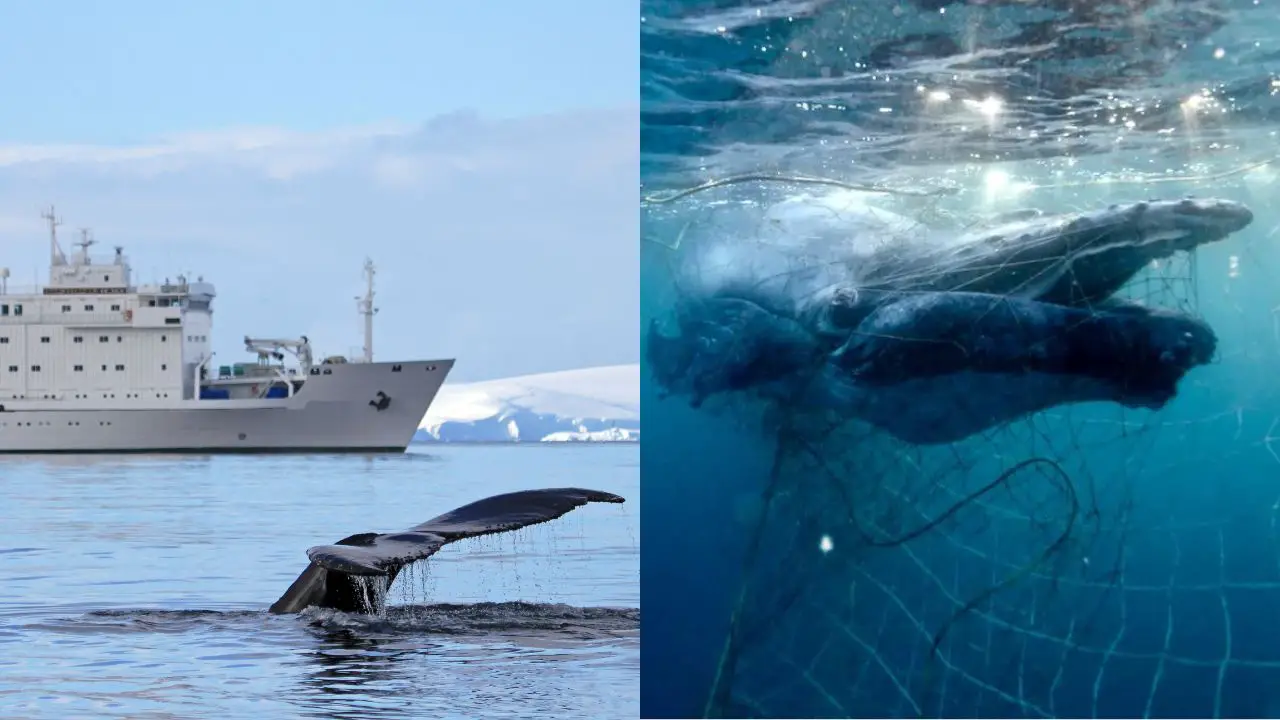
Humpback whales are the biggest threat to some of the human activities. Humpback whales often can get entangled in fishing nets and lines which can injure them. Large vessels or ships can collapse into the ocean and accidentally hit humpback whales which can cause serious harm to them when mixed up in the, Pollution and other chemicals can make things complicated for the humpback whales to live.
Underwater noise from activities that create noise pollution such as shipping, construction, and naval exercises can disrupt humpback whales’ communication, navigation, and feeding behaviors. This can lead to stress and even strandings. Global warming is also the biggest threat to humpback whales as it damages their food.
Engage with Us: Did you find this article informative? Share your thoughts in the comments below or share this article with others to spread awareness!


Leave a Reply